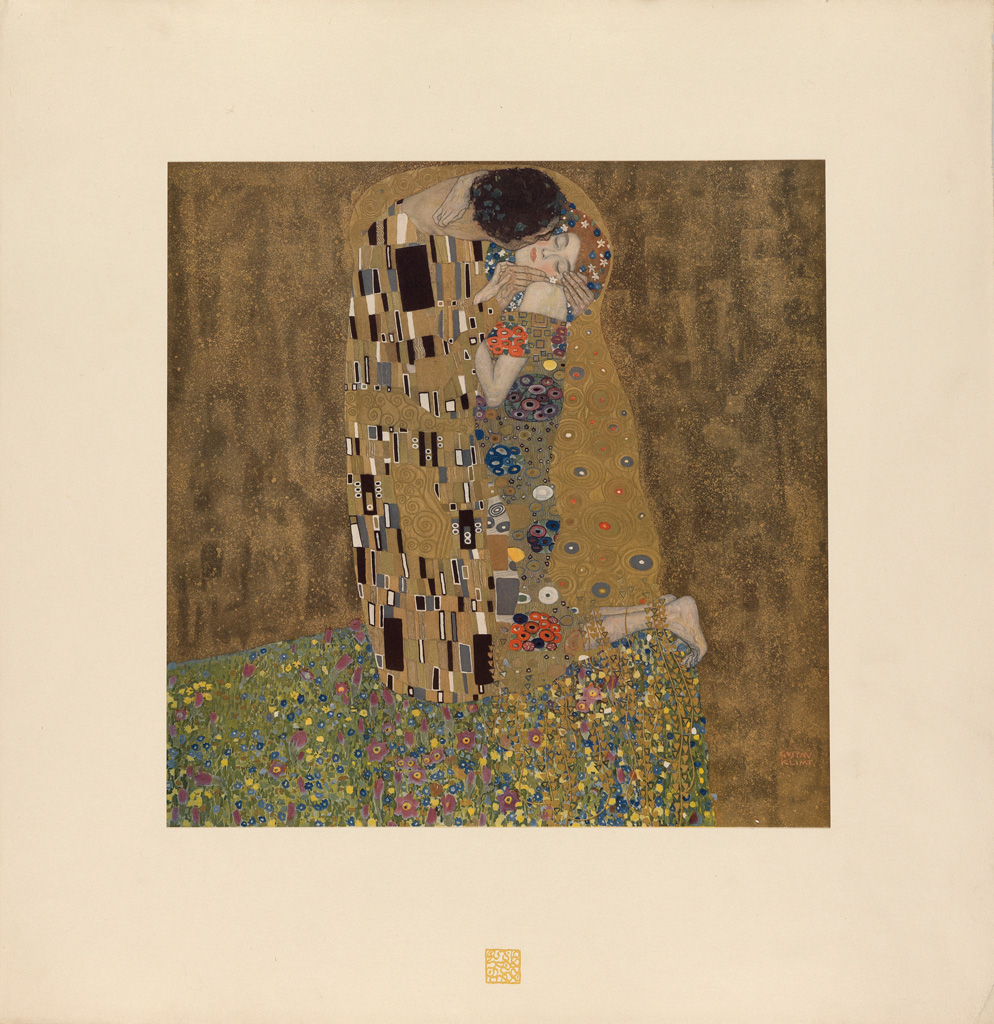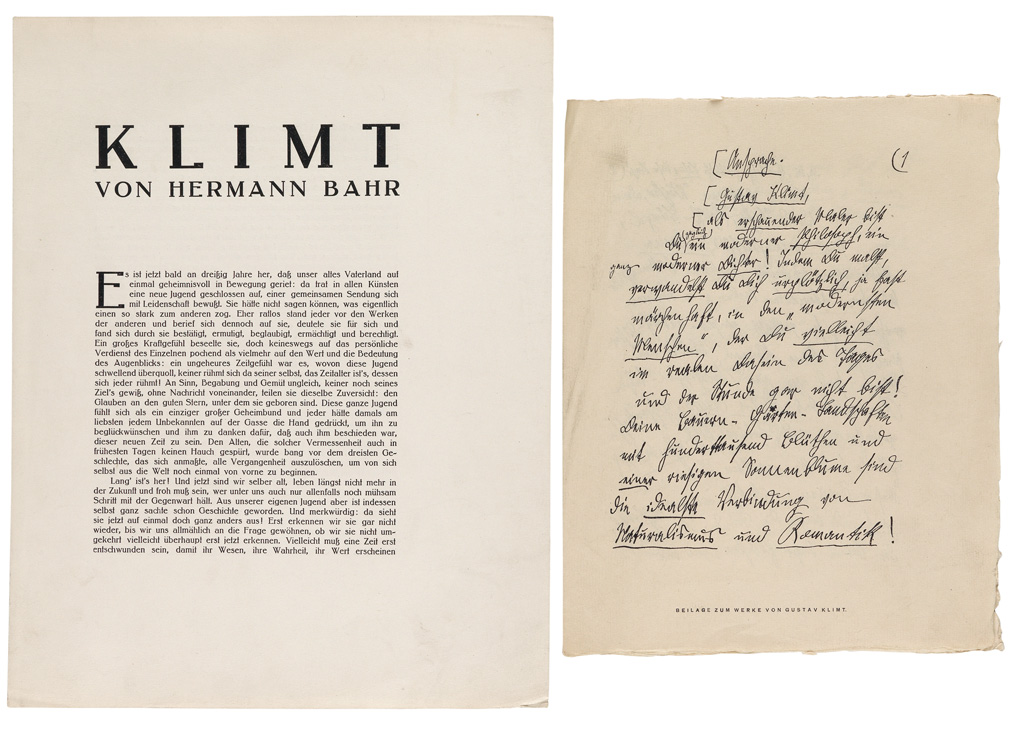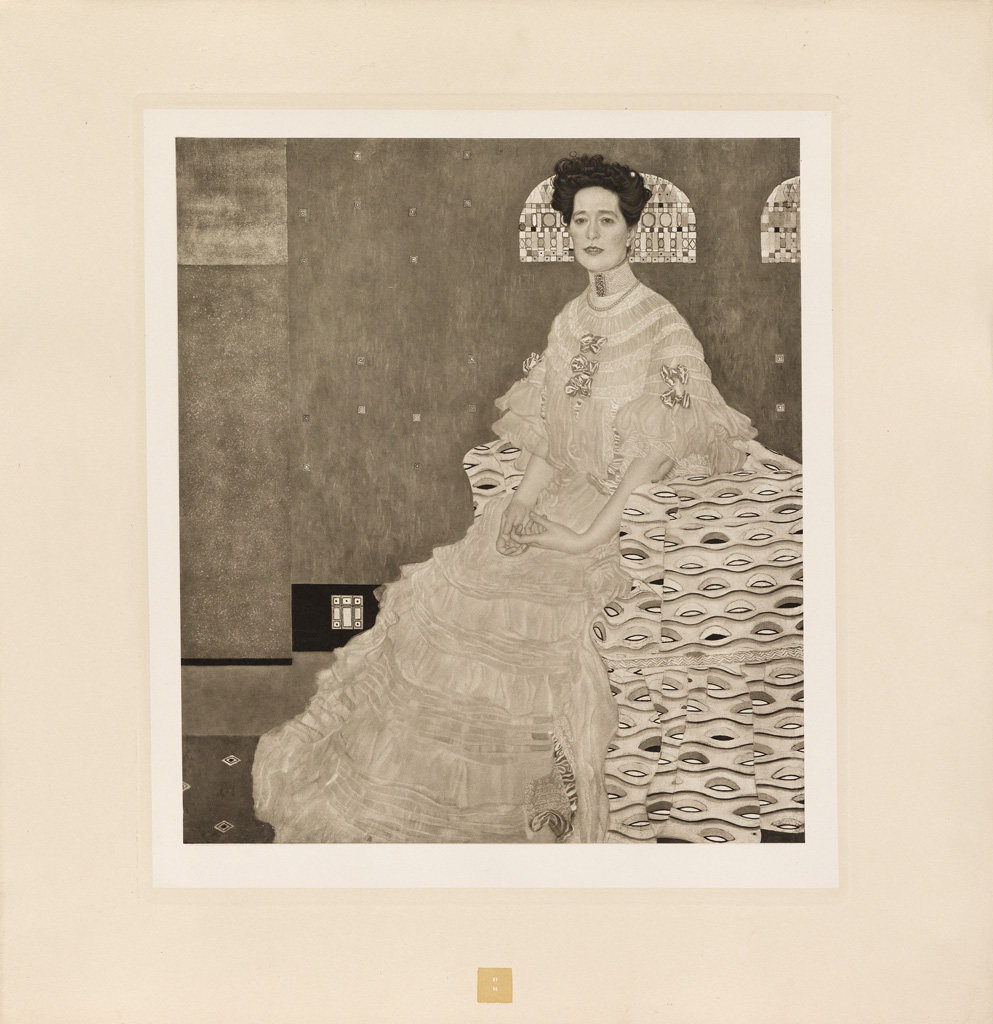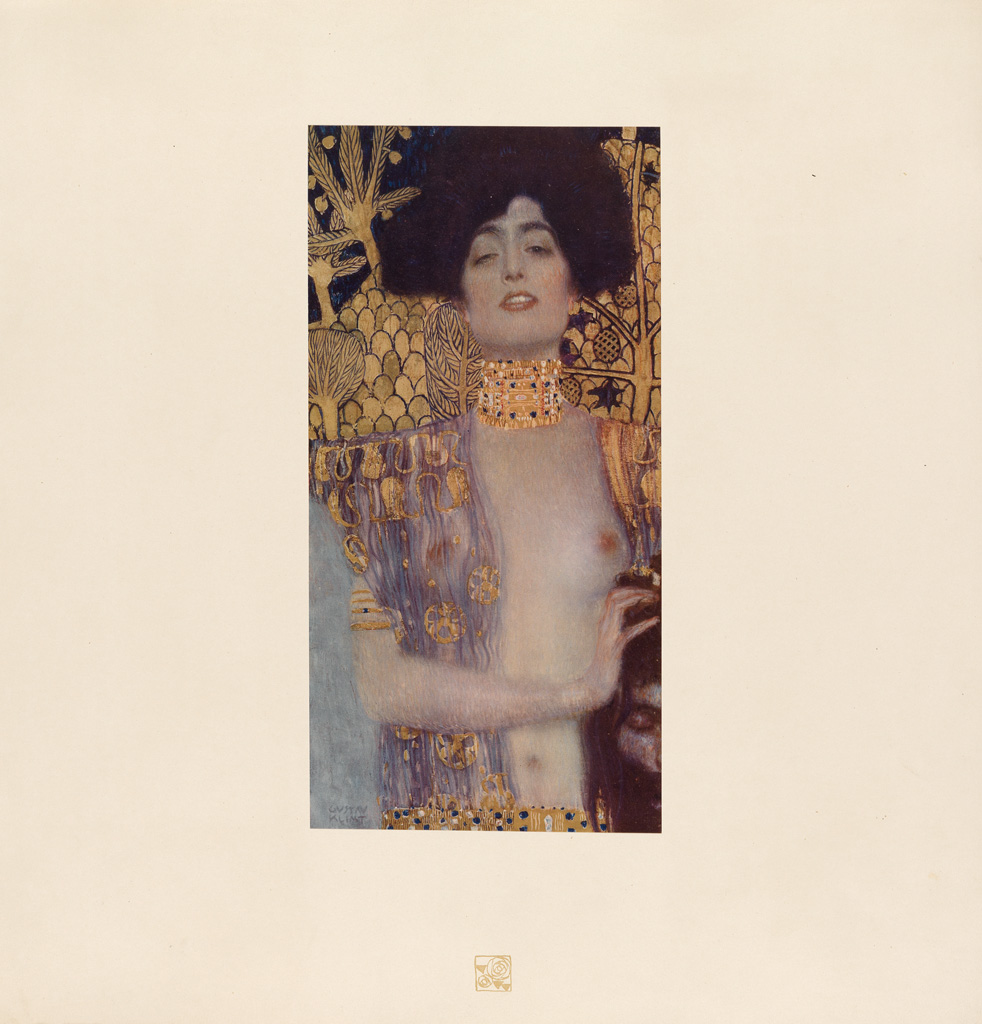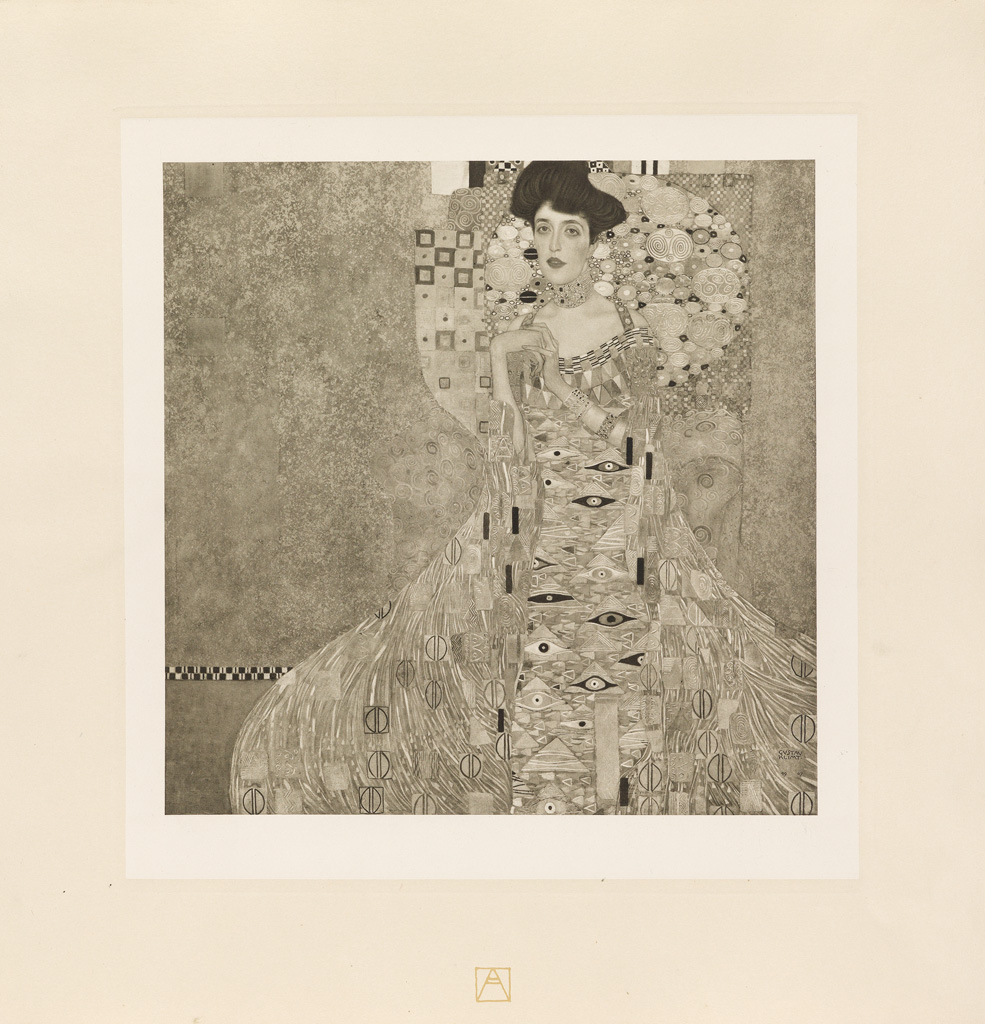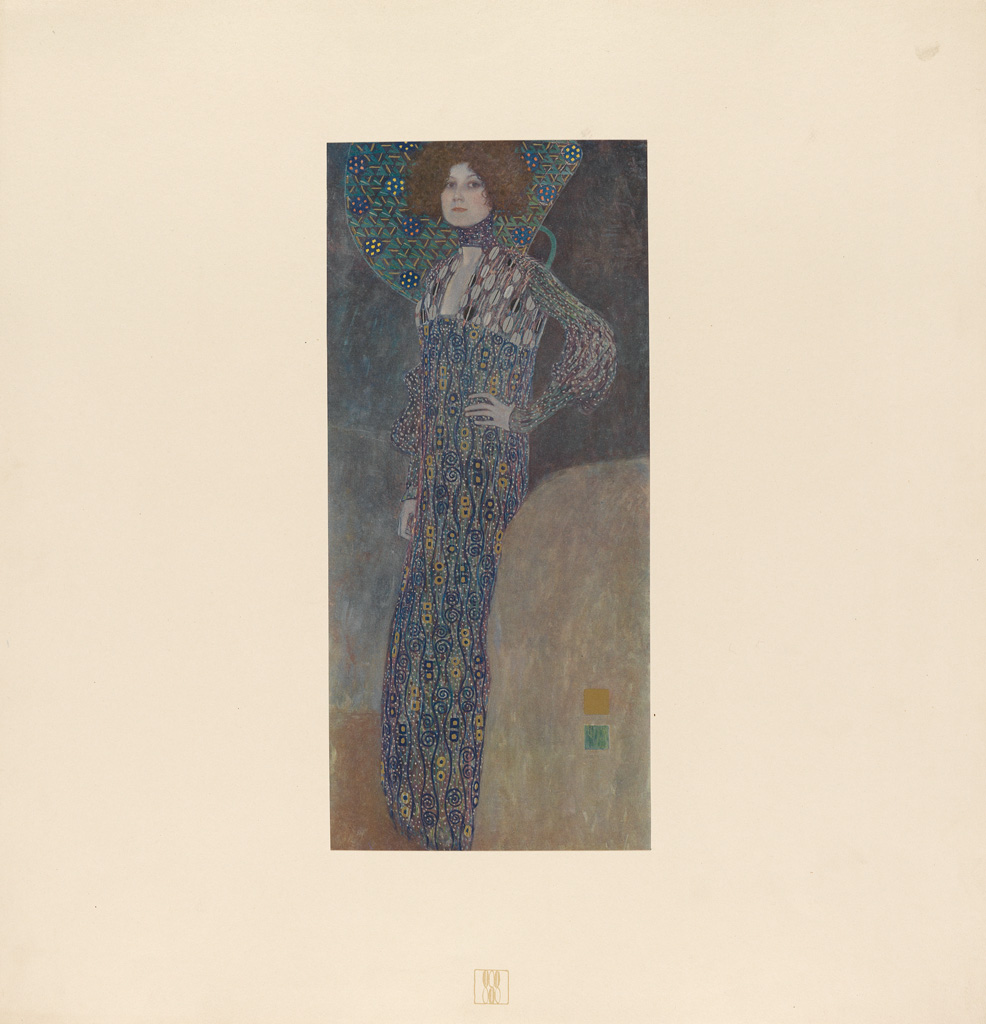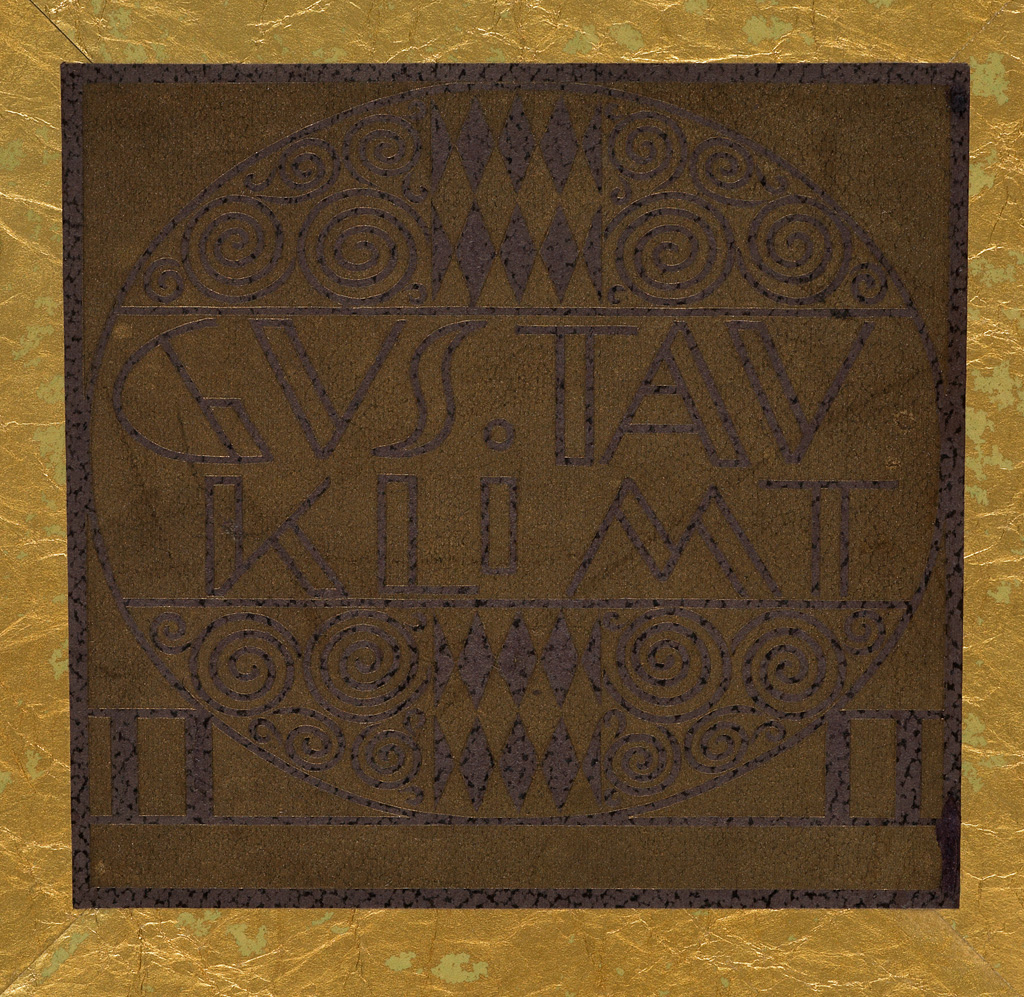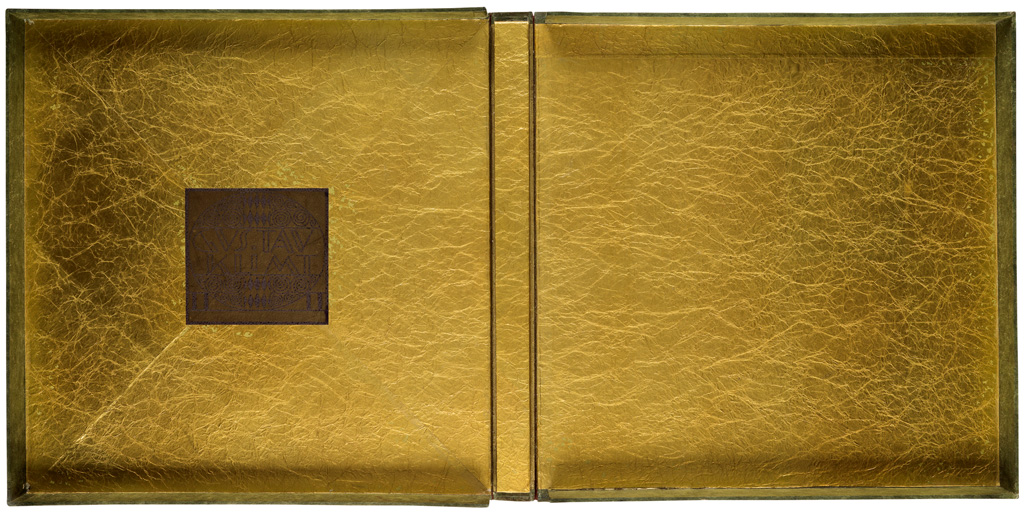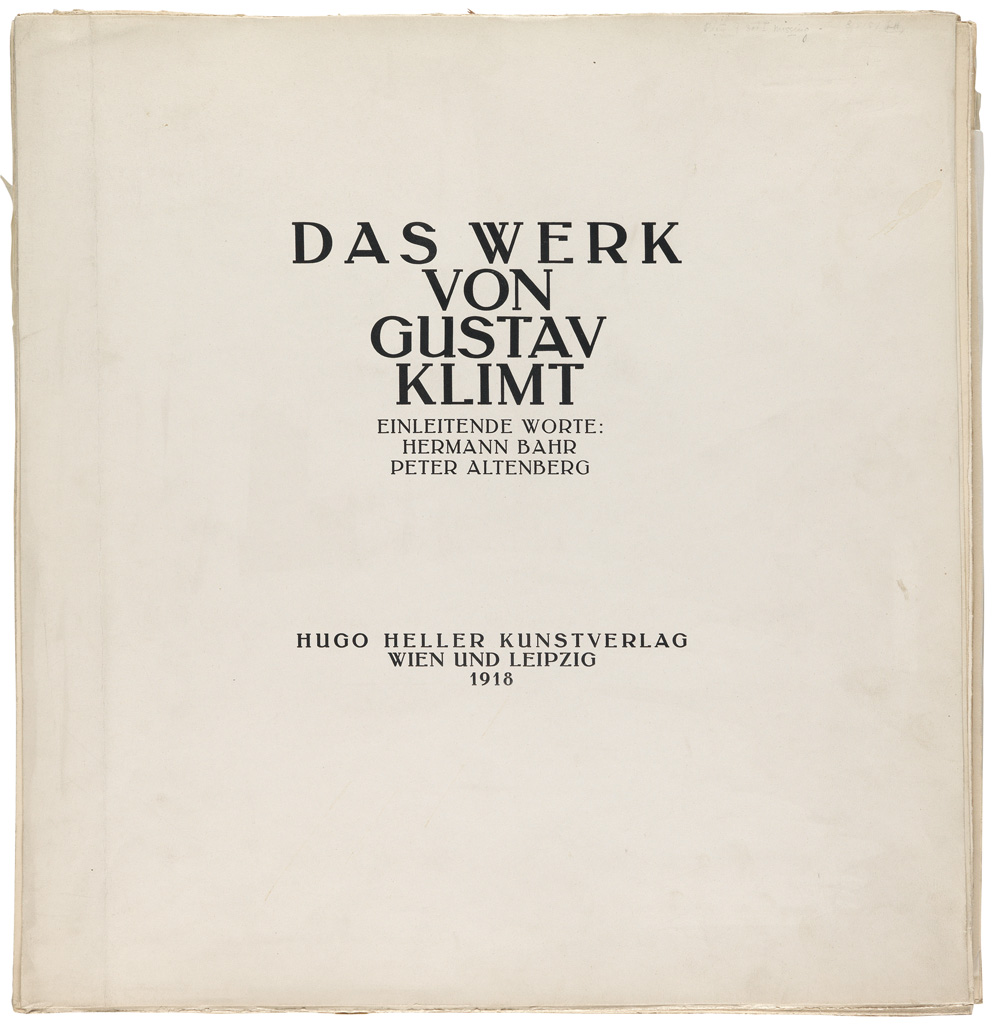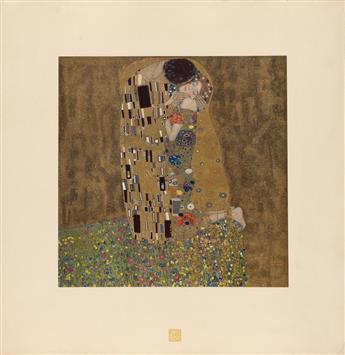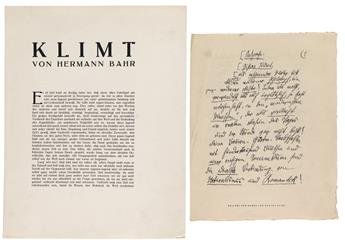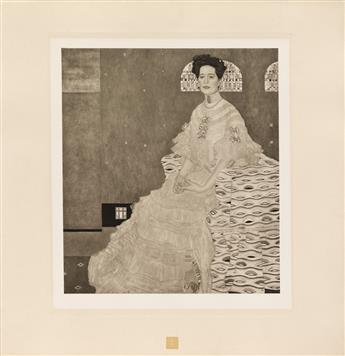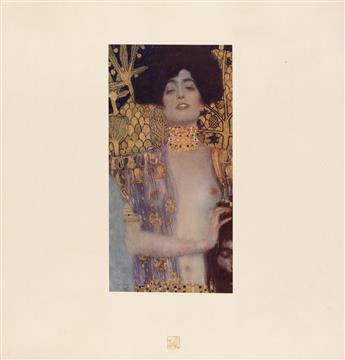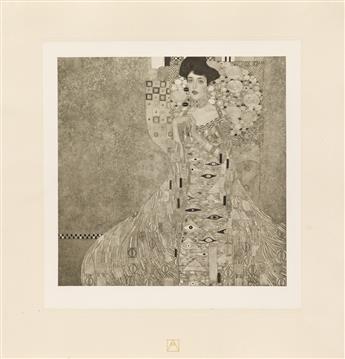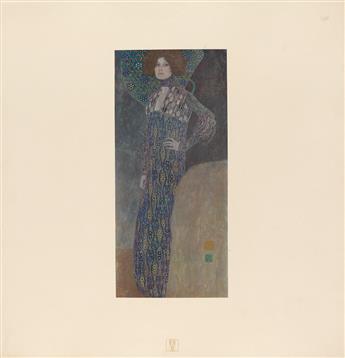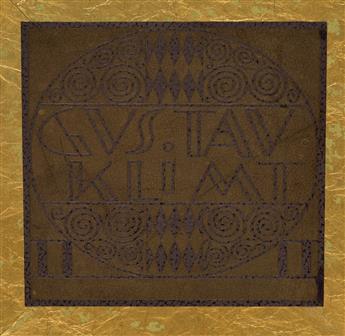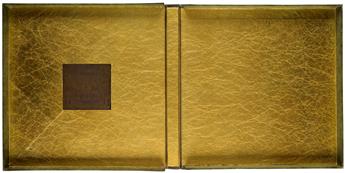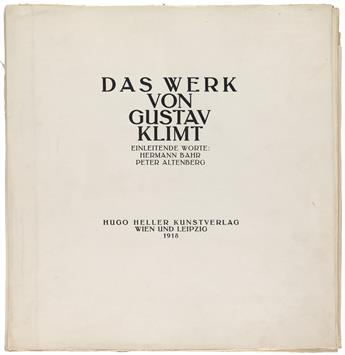Sale 2475 - Lot 169
Price Realized: $ 85,000
Price Realized: $ 106,250
?Final Price Realized includes Buyer’s Premium added to Hammer Price
Estimate: $ 25,000 - $ 35,000
(KLIMT, GUSTAV / VIENNA SECESSION.) Das Werk von Gustav Klimt. Text by Hermann Bahr and Peter Altenberg. 49 (of 50) richly printed collotype plates including 9 (of 10; lacks "Freundinnen") printed in color and heightened in gold and silver, all with specially designed unique intaglio signets printed in gold in lower margins; 470 x 453 mm; 18 1/2x17 3/4 inches, sheets. Large square folio, contents (title-page, plate lists, and separate sheets with Bahr and Altenberg text) loose as issued in facsimile publisher's case in imitation of original Julius Dratva design, front cover detached; plates and margins alternately foxed but most color plates still fairly clean. Printed by K. K. Hof-und-Staatsdruckerei. Vienna and Leipzig: Hugo Heller, 1918
Additional Details
hand-numbered 62 of 300 copies of this scarce and magnificent publication. Klimt's only monograph published in his lifetime and shortly before his death. Prepared and produced under his artistic supervision between 1908 and 1918, Das Werk was a tour-de-force collaboration between the artist and his close friend, the visionary Viennese publisher, Hugo Heller.
Each image is rendered in collotype (heliogravure) and bears its distinctive signet in the lower margin. These gold signets were original designs which Klimt specifically developed between 1908 and 1914 in order to designate and symbolize each image in this portfolio (for further information on the signets and their relationship to the paintings, see Alice Strobl, Die Zeichnungen 1904-1912, Salzburg, 1982, pages 286-290.)
The total edition was 70 deluxe copies with an original drawing and this edition of 230, though many were lost or misplaced as a result of Heller's bankruptcy, subsequent move, and Klimt's death soon after the publication. The Emperor Franz Joseph was the first to buy a copy of the portfolio and, notably, Frank Lloyd Wright owned one as well (See Alofsin, Anthony. Frank Lloyd Wright, Art Collector: Secessionist Prints from the Turn of the Century. 2012).
Each image is rendered in collotype (heliogravure) and bears its distinctive signet in the lower margin. These gold signets were original designs which Klimt specifically developed between 1908 and 1914 in order to designate and symbolize each image in this portfolio (for further information on the signets and their relationship to the paintings, see Alice Strobl, Die Zeichnungen 1904-1912, Salzburg, 1982, pages 286-290.)
The total edition was 70 deluxe copies with an original drawing and this edition of 230, though many were lost or misplaced as a result of Heller's bankruptcy, subsequent move, and Klimt's death soon after the publication. The Emperor Franz Joseph was the first to buy a copy of the portfolio and, notably, Frank Lloyd Wright owned one as well (See Alofsin, Anthony. Frank Lloyd Wright, Art Collector: Secessionist Prints from the Turn of the Century. 2012).
Exhibition Hours
Exhibition Hours
Aliquam vulputate ornare congue. Vestibulum maximus, libero in placerat faucibus, risus nisl molestie massa, ut maximus metus lectus vel lorem.



